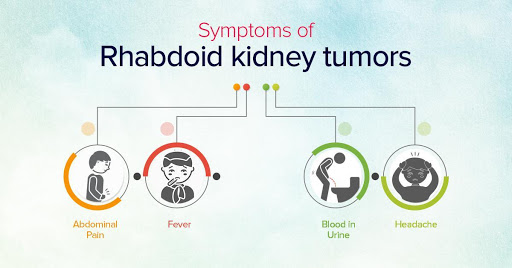
Book a Consultation
Thank you!
Your form has been sent successfully.



March 25, 2021
A rare and highly aggressive variety of pediatric carcinoma, Malignant Rhabdoid Tumor or MRT is usually not handled very well due to lack of sufficient knowledge about it. Read on to get a better understanding of this disease and to learn about some of the common treatment plans that are implemented to deal with it.
MRT is a condition that is detected in about 25 children in the United States every year. It is common to see this disease in very young children, especially infants and toddlers. Such tumors are mostly found in the kidneys and are known for metastasizing at a very high speed. While no research findings have been able to pinpoint the exact cause of an MRT tumor in the kidneys, years of focused investigation has revealed that in a majority of such tumors, a particular gene known as the SMARCB1 is mutated. This gene is a tumor suppressor gene and, therefore, when it is abnormally mutated, it loses its ability to protect cells from cancerous growths.
Symptoms of MRT:
Diagnosis of MRT:
A set of procedures can help you find out what type of tumor is present in your child’s kidney. These tests are also beneficial in figuring out if cancer has metastasized, and if so, what other areas of the body has it taken over. Aside from a thorough physical examination, here are some diagnostic methods used for MRTs:
Biopsy – A small part of the tissue is extracted from the tumor using a minimally invasive method and studied extensively to understand its physiology and determine its type.
CAT Scan, Bone Scan or MRI – These imaging methods are used to find out if metastasis has occurred.
Treatment Options For MRT:
A combined medley of treatment protocols is used together to treat MRTs. The appropriate mix of treatment options is decided on a case by case basis. Here is a list of these procedures:
Surgical Intervention - The very first step in the treatment process for an MRT is to surgically remove either the entire tumor or portions of the tumor. Depending on the location of the tumor, your physician will decide on the degree of excision.
Chemotherapy – Like most other forms of carcinoma, MRTs are also treated to a certain extent using drugs that can inhibit the growth of cancer cells. The dose is usually quite aggressive and can lead to some harsh side effects.
Radiation Therapy – Children over the age of six months may undergo radiation therapy which involves administration of high-intensity x-rays to annihilate cancer cells.
Stem Cell Transplantation – Extraction of healthy blood cells from the child’s body followed by administration of drugs to kill cancer cells. After the chemo rounds, the healthy blood cells are re-infused into the body.
MRT survivors may have to lead their lives with several long-term effects of the cancer therapies that they have undergone, as well as a constant threat of development of secondary cancers. It is, therefore, essential to ensure that they get themselves checked every year to manage all the fallouts of MRT post-treatment.
For more information on various types of cancers and their treatments, please visit our website –Advanced Cancer Treatment Centers


November 13, 2025
Food choices feel high-stakes during cancer care, and because of that,...
KNOW MORE

November 13, 2025
Ablation treats prostate cancer using energy such as heat, cold, elect...
KNOW MORE

November 13, 2025
Discovering a fast-growing bump on your skin can cause immediate worry...
KNOW MORE

November 13, 2025
Triple negative breast cancer (TNBC) is one of several kinds of breast...
KNOW MORE

June 03, 2024
The last decade has witnessed a sea change in oncologic treatments. Re...
KNOW MORE

April 17, 2024
Oncology is one of the most exciting fields in medicine today. Disease...
KNOW MORE
